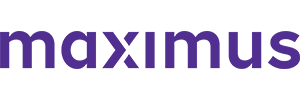Basic guidelines
When providing narrative information and additional documentation to support your offer of payment in a dispute, keep in mind the following basic guidelines related to the contents of your submission:
Relevant and specific
Information provided should relate to your offer and be pertinent to the claim in dispute (as opposed to general information or documents that do not speak to the specifics of the case).
Pertains to the factors considered
Material contained in your submission should be directly applicable to the factors taken into consideration for rendering a payment determination per the regulations.
- Include credible supporting documentation to corroborate statements from your narrative brief whenever possible
Organized and concise
Structuring your narrative brief into sections for each referenced factor is helpful and enhances readability, as does keeping the information succinct and pertaining specifically to the claim in dispute.
Initiating party documentation examples
In support of eligibility
- Proof of initiating open negotiation (including email or screenshot of email reflecting that the Open Negotiation Notice was sent to the non-initiating party)
- Full explanation of benefits with arbitration language/instructions
- Proof of Independent Dispute Resolution initiation (including email or screenshot of email reflecting that the Notice of IDR initiation was sent to the non-initiating party)
- Member ID Card (if applicable)
- UB-04 Form (for bundled disputes using a DRG code)
- CMS extension documentation confirming extension approval
- Prior payment determination containing the same disputing parties, service code, and date cooling off period began
Non-Initiating party documentation examples
In support of ineligibility
- A full and complete Explanation of Benefits with detailed remark codes and Health Plan contact information visible
- Initial Payment or Notice of Denial of Payment
- Supporting materials to show when the initiating party initiated open negotiation
- Any information which supports your assertion that the items or services under dispute are NOT eligible and qualified under the No Suprises Act (evidence reflecting the following: services in-network, applicable contracts, plan not in effect at time of service, state law applies, improper batching/bunding, cooling off period in effect)

